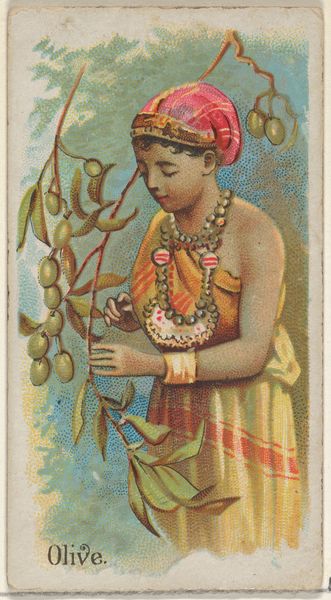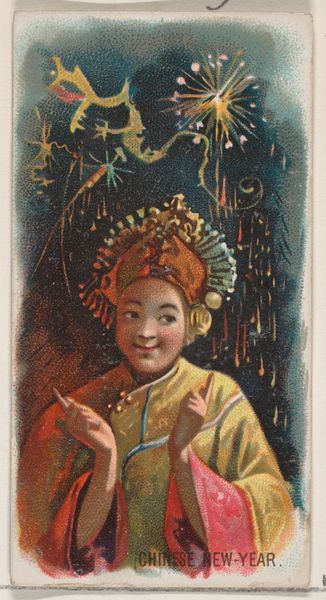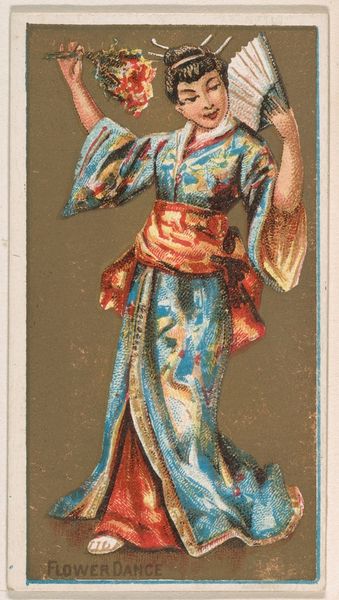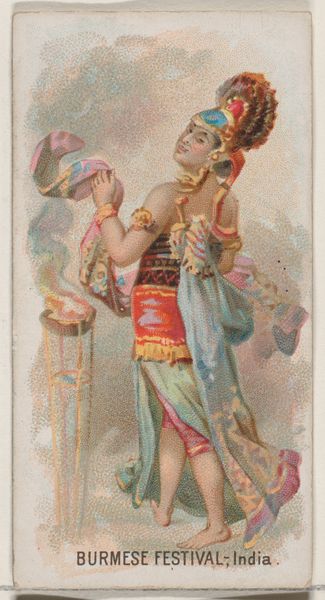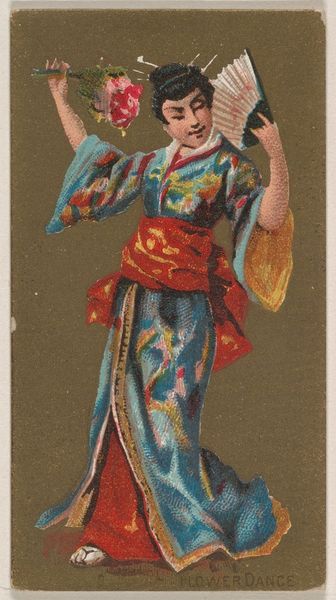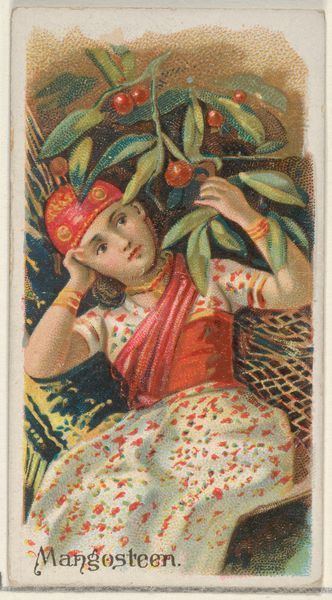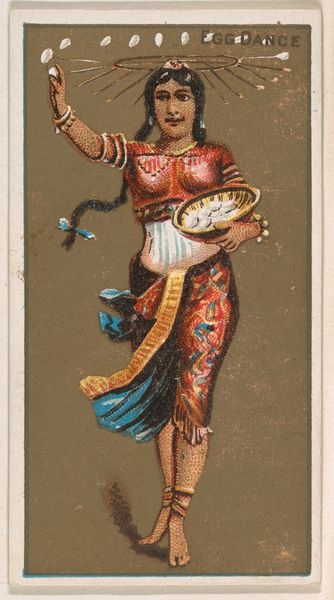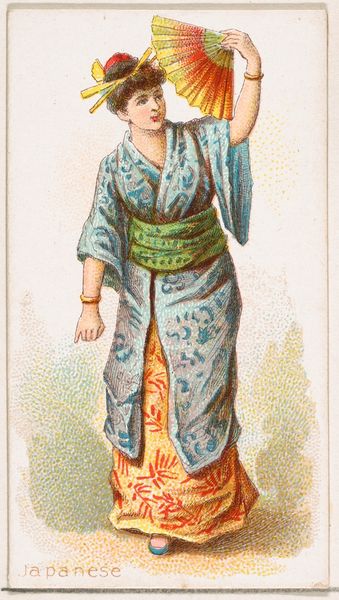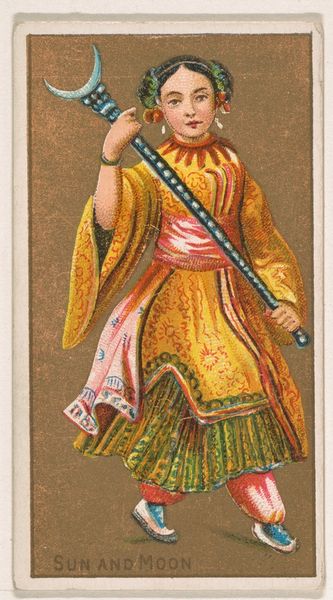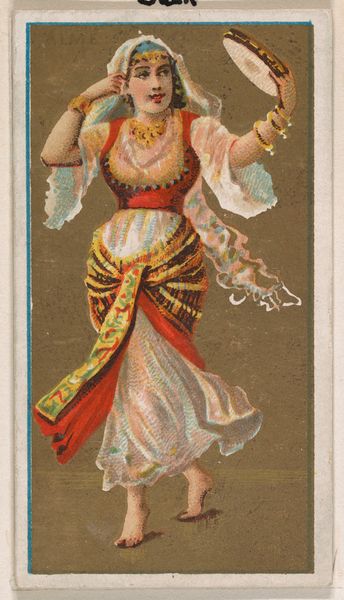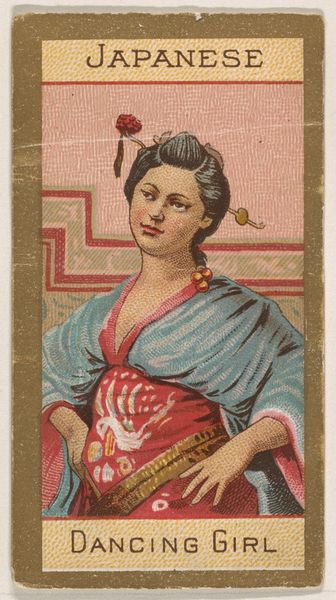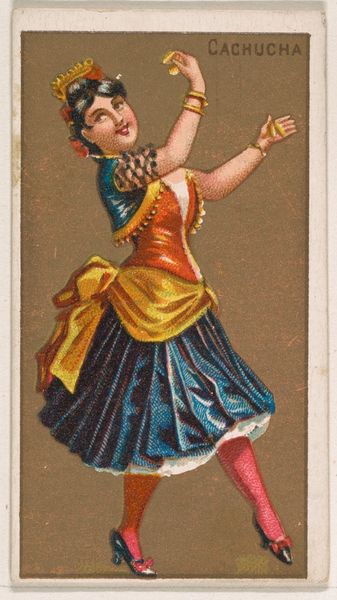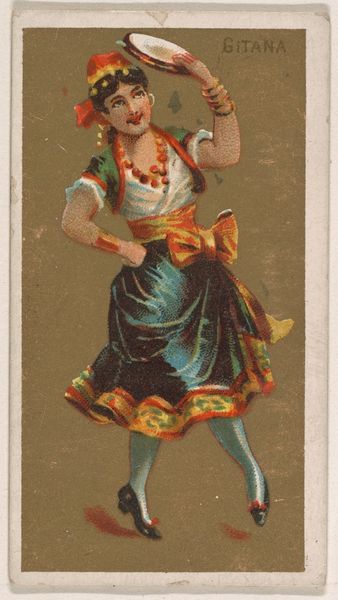
Chinese Lychee, from the Fruits series (N12) for Allen & Ginter Cigarettes Brands 1891
0:00
0:00
Dimensions: Sheet: 2 3/4 x 1 1/2 in. (7 x 3.8 cm)
Copyright: Public Domain
Curator: This vibrant little piece is titled "Chinese Lychee," one from a series of fruit portraits created in 1891 for Allen & Ginter Cigarettes. It's a watercolor print, residing now at the Metropolitan Museum of Art. Editor: It's oddly compelling for cigarette packaging. There’s almost a dreamlike quality to the rendering of the figure and fruit against that stylized background—kind of eerie, yet beautiful. It pulls you in. Curator: Allen & Ginter were pioneers in using vibrant imagery on their cigarette cards. They weren't just selling tobacco, they were selling an image of luxury, and the exotic appeal of Chinese lychees definitely fit the bill. Note the layering of flat colour fields and subtle tonal variations. Editor: I can't help but feel for this woman. Her downcast eyes make her seem strangely self-aware, or even world-weary, trapped as an exotic prop in some consumerist fantasy, an emblem, in that sense, of both beauty and exploitation. Curator: Indeed, her image is part of a larger commercial strategy. This isn't merely art for art's sake. The lithographic process allowed for mass production, integrating art directly into everyday consumer culture. Examining the card in that context provides insight into the historical moment and its socio-economic climate. The card functions as a vehicle to deliver art and luxury for general consumption. Editor: And look at those lychees, rendered as miniature, jewel-like spheres with tiny nets inscribed into their surface – they’re gorgeous, but also incredibly fragile in their presentation. Perhaps a reference to the precious cargo travelling over sea for the American consumers. Does it make you think about that globalised distribution system? Curator: Precisely! We see a complex interplay between artistic expression and marketing ingenuity here. The artist clearly pays attention to the textures of both fabrics, setting and the flesh of the fruits; Allen and Ginter's brand would use that beauty to boost visibility on the market. Editor: So, this tiny image speaks to art history and capital at once, huh? I am starting to see beyond the initial surface appeal. Curator: Absolutely. That interplay highlights art's participation in shaping and being shaped by the wider economic landscape of the period.
Comments
No comments
Be the first to comment and join the conversation on the ultimate creative platform.
